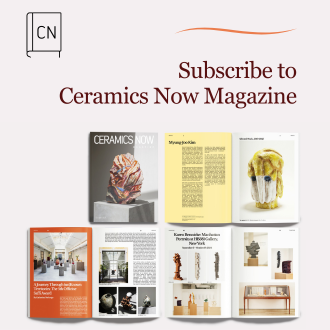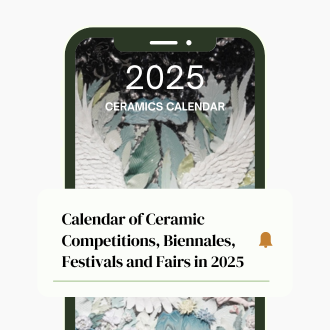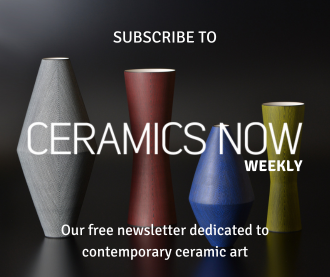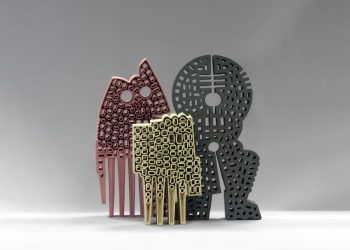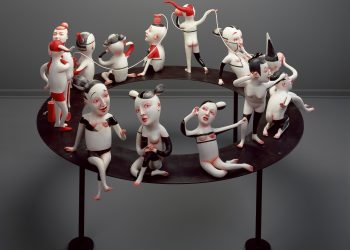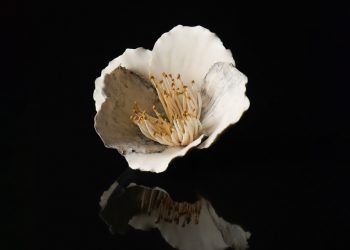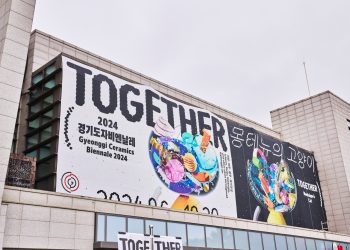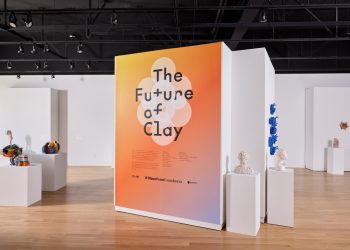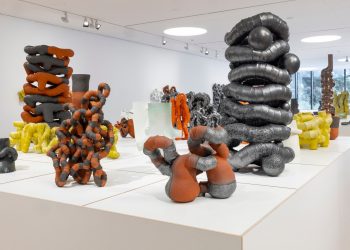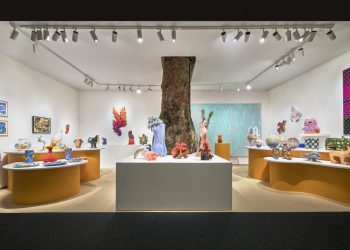Salvador Jiménez-Flores is an interdisciplinary artist born and raised in Jalisco, México. He explores the politics of identity and the state of double consciousness. Jiménez-Flores addresses issues of colonization, migration, “the other,” and futurism by producing a mixture of socially conscious installation, public, and studio-based art. His work spans from community-based work, drawing, ceramics, prints, and mixed media sculpture.
Jiménez-Flores has received the 2021 United States Artist Fellowship, Joan Mitchell Foundation Painters & Sculptors Grants, The New England Foundation for the Arts and Threewalls’ RaD Lab+Outside the Walls Fellowship. He has received public sculpture commissions by The Richard Hunt Award and Artprize. He has lectured and exhibited extensively at venues including National Museum of Mexican Art, Grand Rapids Art Museum, Museum of Glass, Bemis Center for Contemporary Arts, Grounds For Sculpture and Museum of Art and Design, Crocker Museum, DePaul Art Museum, amongst others. He served as Artist-In-Residence for the city of Boston, Harvard Ceramics Program, Office of the Arts at Harvard University, Kohler Arts Industry, Haystack Mountain School of Craft, Watershed Center for the Ceramic Arts, Museum of Glass and Chasen Thajni: El límite de lo propio in Puebla, México. This Summer Jimenez-Flores will be an Artistist-In-Residence at the Joan Mitchell Center in New Orleans. He is an Assistant Professor in ceramics at the School of the Art Institute of Chicago.
Jiménez-Flores is a former organizing member of The Color Network, an organization that promotes the advancement of people of color in the ceramic arts and assists artists develop, network, and create dialogue while maintaining a place for a database, resources, and mentorship. He is also an organizing member of the Instituto Gráfico de Chicago, an organization inspired by the socio-political art of Mexico’s Taller de Gráfica Popular (The People’s Print Workshop) and uses art as a platform to inform and generate community discourse about urgent social issues.
Visit Salvador Jiménez-Flores’ website and Instagram page.
Featured work
Selected works, 2021-2024
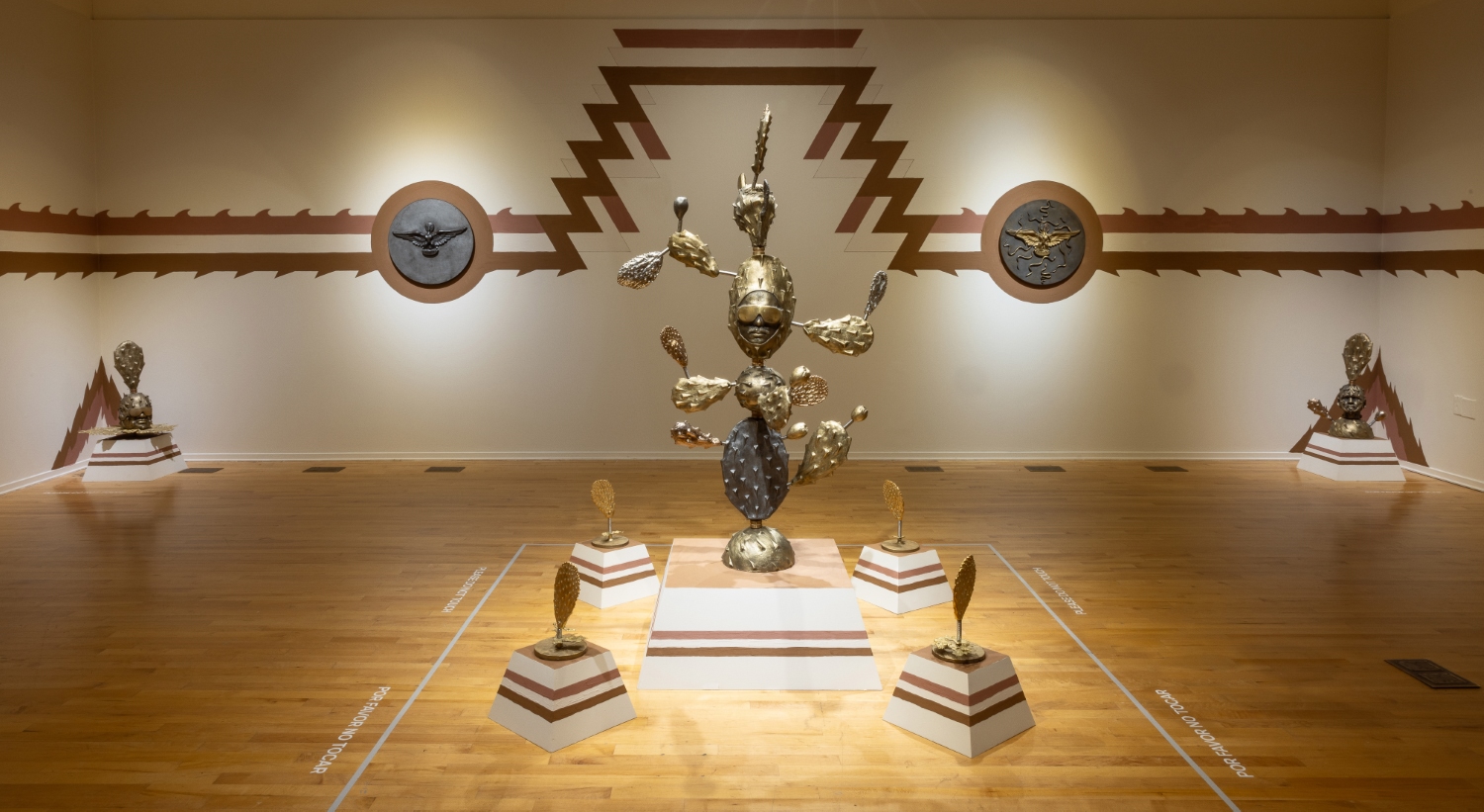
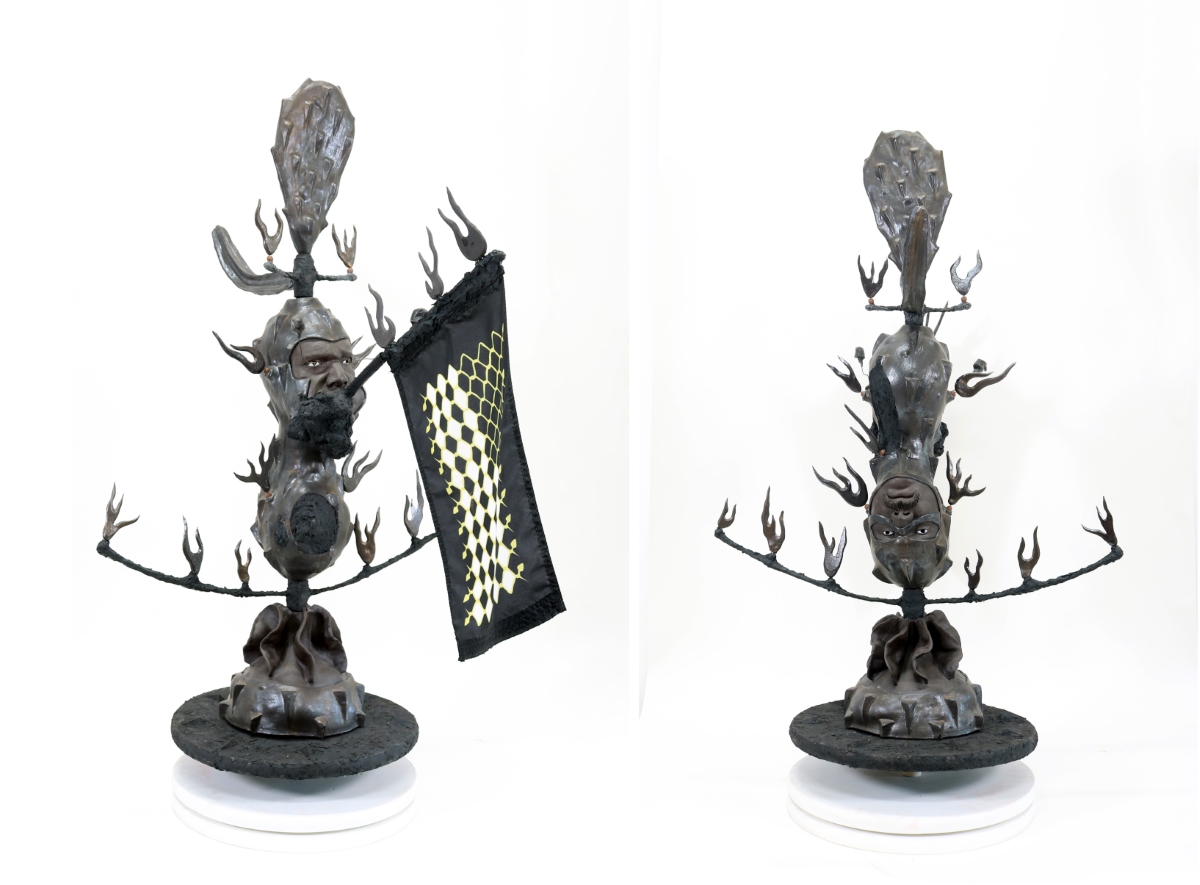
My body of work seeks to expand contributions to the artistic and scholarly explorations in politics of national identity and double consciousness within histories of colonization, migration, and the idea of “the other” in American life. By deploying aesthetic movements like Chicano-Futurism through the production of conscious installations, studio-based and public art, I highlight the struggles and complexities of the diverse experiences of Latinx people living in the United States.
As an artist born and raised in Jalisco, México, my identity as an immigrant and an American means occupying a life of domestic alienness. To borrow from W.E.B Du Bois’s writing, The Souls of Black Folk (1903), the Latinx immigrant in America often struggles with the duality of living in their adopted country, while not entirely belonging to its political community as social equals. Indeed, what is otherwise a legal migratory status is inverted into the putatively racialized experience of caste in a white-dominated society that disavows one’s dignity. Hence, as Du Bois observed over a century ago, to live in this dichotomous political space is a peculiar sensation: it is “this double-consciousness, this sense of always looking at one’s self through the eyes of others.” As a person whose life and work embodies this peculiarity, I employ the talents of my artistic expression to showcase the significance of this concept and its relevance for immigrants and other Americans whose racialized cultures mean having to be seen as a permanent other living at the margins of the center.
My work reflects this effort to make visible the structural violence that is inherent in double-consciousness, to unpack the injustices left unseen. In doing so, I focus on communities that I call home like the neighborhoods of Little Village and Austin in Chicago. These communities are continually dispossessed of their humanity by institutionalized and systemic racism. My work aims to forge a generative expression that serves as conduit to make the pains visible while also showing the strength and resilience of healing practices undertaken by these communities.
I offer my art as a means to foster greater conversations through shared knowledge about what it means to look at “one’s self through the eyes” of one’s oppressors. As such, the art becomes both text and archive by preserving the intimate stories of the immigrant American. This artistic expression is critical for the fact that it captures the stories of my people, my ancestors and my neighbors, while demonstrating to my adopted country, our neighbors and our governance, that we are knowledgeable, hardworking, have important contributions to make, and yes, we do belong.
Objects and art take up space and demand attention. As an immigrant and artist of color living in the United States, I leave a mark and my mark takes space. I contribute to the fabric of America’s diverse tapestry.
My artistic practice is an amalgamation of artist, citizen, and educator. As an artist, I use my craft to address issues that affect my community, create awareness, and propose actions through my art. As a citizen, I believe that social change starts within oneself and takes community relationships to manifest the change we want to see. As an educator, I impact the lives of my students in positive ways, inspiring new generations of artists to continue as guides for forthcoming generations—creating an unbroken chain of shared knowledge. Together we can create a more equitable and just society. In my work, the fusion of these three roles – artist, citizen, educator – is significant because together they create the synergy that I need to stay hopeful, curious, playful, and take risks.


